- Home
- William Shakespeare
Titus Andronicus & Timon of Athens Page 12
Titus Andronicus & Timon of Athens Read online
Page 12
ACT 4 SCENE 3
Titus enters with Marcus, Marcus' son Publius, Young Lucius, and other kinsmen. Titus has a sheaf of arrows with letters tied to them detailing Saturninus' crimes which he orders his companions to send to the gods in the sky with their bows. Everyone fears for Titus' sanity, and Marcus tells them all to shoot their messages over the palace walls so that they may have some real effect. A Clown enters, on his way to the court to try and settle a private dispute, and Titus mistakes him for a god. Titus gives the Clown a letter for Saturninus, promising him a reward if he delivers it along with the pigeons he is carrying. The Clown agrees.
ACT 4 SCENE 4
Saturninus, incensed by Titus' messages, receives the Clown into his presence. Upon reading the letter he brings, Saturninus orders the Clown to be hanged. Emillius, a messenger, then brings word that Lucius and the Goths intend to attack Rome. Saturninus fears that the people will not support him as they hold Lucius dear, but Tamora sends Emillius to summon Lucius to Titus' home for peace talks. In the meantime, Tamora resolves to go to Titus, who she thinks mad, to try to manipulate him into ensuring Lucius attends the summit, hinting that it will be "dangerous" for the Andronici to believe her "sweet" words.
ACT 5 SCENE 1
In the camp of the Goths, Lucius says he has received letters importing the Roman people's support for him and hatred of Saturninus. The Goths state how proud they are to fight alongside so noble and brave a former adversary, and one enters with Aaron and the child captive, saying he found them in a ruined monastery (an anachronism that betrays the play's Elizabethan origins). Lucius orders them to be hanged, but Aaron swears to reveal secrets if the child is spared. Lucius gives his word and Aaron uncovers all Chiron's, Demetrius', Tamora's, and his own villainies against the Andronici, as well as revealing Tamora as the child's mother. He also admits to many other terrible deeds he has committed in his life, and expresses sorrow that he "cannot do ten thousand more." Lucius orders Aaron to be taken down, as hanging is too "sweet" a death for him. Emillius arrives and requests that Lucius meet Saturninus at Titus' house. Lucius agrees.
ACT 5 SCENE 2
Tamora, Chiron, and Demetrius, believing Titus to be mad, go to his house disguised as the deities Revenge, Rape, and Murder. In a blackly comic moment Titus notes of the latter two "how like the empress' sons they are." Tamora (as Revenge) promises that if Titus sends for Lucius to come to his house for a banquet, she will bring all Titus' enemies there for him to be revenged upon. Titus sends Marcus to fetch Lucius, and while Tamora and her sons are leaving on the pretense of doing what Revenge has promised (though they are of course going back to Saturninus), Titus demands that Rape and Murder be allowed to stay with him. They confer in an aside that it will be best in order to placate him and keep him occupied, but with Tamora gone, Titus' kinsmen come out and seize upon Chiron and Demetrius, gagging and binding them. Titus reenters, carrying a knife, alongside Lavinia, who is supporting a basin on her stumps. Titus, in a long, blood-curdling speech, reveals that he is not mad, that he knows what they have done, and that he will exact a revenge "worse than Progne." He tells them he is going to cut their throats, catch their blood in Lavinia's basin, mix it with their bones which he will grind "to powder small," and make "two pasties" to feed to Tamora at the banquet (as in Act 4 Scene 1, this is an escalation of an Ovidian myth). As good as his word, he slits their throats and orders the bodies brought in so that he may "play the cook."
ACT 5 SCENE 3
Marcus, Lucius, and the Goths arrive at Titus' home with Aaron and the child prisoner. Lucius asks Marcus to keep Aaron alive so that they may later extract testimony of Tamora's crimes, and Aaron is led away. Saturninus and Tamora arrive and they and all the rest sit down to dinner. Titus enters "like a cook" and asks Saturninus if he thinks Virginius--an infamous centurion--was right to kill his daughter for being raped. Saturninus replies that he was, because the girl "should not survive her shame." At this Titus kills Lavinia. Saturninus, horrified, demands to know the reason for this "Unnatural and unkind" act. Titus tells him of Chiron and Demetrius' crime, and Saturninus orders them to be sent for. Titus, however, reveals that they are already present, "baked in that pie." He then stabs and kills Tamora; Saturninus leaps up and kills Titus; and Lucius in turn kills him. Uproar ensues, but Marcus and Lucius justify the grim events by telling the people everything that Tamora, Chiron, Demetrius, and Aaron have done. They also reveal the parentage of the child, and offer to kill themselves if Rome is not satisfied. Emillius calls for Lucius to be emperor, saying the people "do cry it shall be so." Lucius accepts, and he, Marcus, and Young Lucius honor Titus' body. Aaron is brought out and Lucius orders for him to be buried "breast-deep" and starved to death, though Aaron remains unrepentant. Lucius orders that Saturninus' body be interred with his ancestors, and Tamora's be cast out "to beasts and birds of prey."
TITUS ANDRONICUS
IN PERFORMANCE:
THE RSC AND BEYOND
The best way to understand a Shakespeare play is to see it or ideally to participate in it. By examining a range of productions, we may gain a sense of the extraordinary variety of approaches and interpretations that are possible--a variety that gives Shakespeare his unique capacity to be reinvented and made "our contemporary" four centuries after his death.
We begin with a brief overview of the play's theatrical and cinematic life, offering historical perspectives on how it has been performed. We then analyze in more detail a series of productions staged over the last half-century by the Royal Shakespeare Company. The sense of dialogue between productions that can only occur when a company is dedicated to the revival and investigation of the Shakespeare canon over a long period, together with the uniquely comprehensive archival resource of promptbooks, program notes, reviews, and interviews held on behalf of the RSC at the Shakespeare Birthplace Trust in Stratford-upon-Avon, allows an "RSC stage history" to become a crucible in which the chemistry of the play can be explored.
Finally, we go to the horse's mouth. Modern theater is dominated by the figure of the director, who must hold together the whole play, whereas the actor must concentrate on his or her part. The director's viewpoint is therefore especially valuable. Shakespeare's plasticity is wonderfully revealed when we hear directors of highly successful productions answering the same questions in very different ways.
FOUR CENTURIES OF TITUS ANDRONICUS: AN OVERVIEW
To judge from the number of early recorded performances and contemporary references, Shakespeare's first essay in tragedy, written in the late 1580s-early 1590s, enjoyed immediate popular success. In his Diary3 Philip Henslowe records a performance on January 23, 1594, by the Earl of Sussex's Men with further performances on January 28 and February 6. Later that year Henslowe's Admiral's Men combined with Shakespeare's company, the Chamberlain's Men, to present the play at the Newington Butts Theatre on June 5 and 12. A private performance, most likely by the Chamberlain's Men, was given at the home of Sir John Harington of Exton on January 1, 1596, described by the French tutor in a private letter as notable for "la monstre" (the spectacle) which he considered of more value than "le sujet" (the subject).
Ben Jonson's slighting reference in the Induction to Bartholomew Fair (1614) indicates that the play remained in the popular repertory, along with Kyd's Spanish Tragedy, despite Jonson's view that it was now outdated:
He that will swear Heronimo or Andronicus are the best plays, yet shall pass unexcepted at, here, as a man whose judgement shews it is constant, and hath stood still, these five and twenty, or thirty years.
A contemporary drawing by writer and artist Henry Peacham gives a unique picture of the play's earliest staging. While it doesn't appear to illustrate any specific scene, Peacham includes quotations from the first and last acts and clearly features the main characters in poses that seem to "offer an emblematic reading of the whole play."4
The play's popularity waned, however, as public tastes changed and the conviction grew among a number of
scholars that Shakespeare could not have been responsible for its bloody excesses; Shakespeare's text was not performed again until the twentieth century, when violence and horror were once more seen as fit theatrical subject matter.
After the Restoration and reopening of the theaters in 1660 a variety of adaptations were staged, the first of which was Edward Ravenscroft's Titus Andronicus, or The Rape of Lavinia (c. 1678). In this the role of Aaron was amplified and the play ended with his confession and fiery death. It was a favorite role of the tragedian James Quin and continued to be popular with actors into the nineteenth century. It was the African American actor Ira Aldridge who turned it into a star vehicle though in an adaptation by C. A. Somerset in which Aaron was "elevated into a noble and lofty character"5 to become the tragic hero. Another American, the actor-playwright N. H. Bannister, also adapted the play and staged it for four nights at the Walnut Street theater in Philadelphia in 1839, having carefully excluded its "horrors" and "offensive expressions."6
1. Henry Peacham's illustration of Titus Andronicus with two soldiers on the left, Titus center left, Tamora center right, her sons kneeling and Aaron, with sword drawn, far right (c. 1604-15).
The director Robert Atkins, influenced by William Poel and his desire to recreate original Elizabethan stagings of Shakespeare's plays, mounted a production of Titus Andronicus at the Old Vic in 1923. Despite acknowledgment of its theatrical power and some critical acclaim,7 the deaths in the final scene produced unwelcome laughter. The following year John M. Berdan and E. M. Woolley directed a group of students from Yale in a production which the critic Tucker Brooke conceded revealed "what a tremendous interest the acted story developed."8
Capitalizing on the play's violent excesses, Kenneth Tynan and Peter Myers produced a "really splendid"9 thirty-minute version for a program of Grand Guignol at London's Irving Theatre in 1951. But it was Peter Brook's 1955 production at the Stratford Memorial Theatre with Laurence Olivier as Titus, Maxine Audley as Tamora, Anthony Quayle as Aaron, and Vivien Leigh as Lavinia which was finally to establish the play's place in the modern Shakespearean repertory, despite some critical carping: "The grizzly, senseless map of horror has been unrolled, and now we can roll it up again for another fifty years."10 However, Jan Kott, the Polish critic and academic, recognized what Brook's judicious cutting had done for the play:
Mr. Brook has composed his Titus Andronicus not of scenes, but of shots and sequences. In his production tension is evenly distributed, there are no "empty places." He has cut the text but developed the action. He has created sequences of great dramatic images. He has found again in Shakespeare the long-lost thrilling spectacle.11
Brook not only cut the text but employed now famous techniques for stylizing the violence and gore, replacing them with flowing scarlet ribbons. There was unanimous praise for a strong cast, but it was Olivier's Titus who attracted the greatest plaudits for a performance regarded by many as definitive:
Titus enters not as a beaming hero but as a battered veteran, stubborn and shambling, long past caring about the people's cheers. A hundred campaigns have tanned his heart to leather, and from the cracking of that heart there issues a terrible music, not untinged by madness. One hears great cries, which, like all of this actor's best effects, seem to have been dredged up from an ocean of fatigue. One recognized, though one had never heard it before, the noise made in its last extremity by the cornered human soul.12
Since Brook's landmark production, the play has been staged with greater regularity and directors have employed a variety of techniques to overcome its perceived difficulties, frequently resorting to stylization and suggestion rather than presenting violence and gore directly. In 1966 Douglas Seale directed a production at the Center Stage in Baltimore which transported the play to Mussolini's Rome. The following year Gerald Freedman directed the play for Joseph Papp's Shakespeare Festival at the outdoor Delacorte Theatre in New York's Central Park. Like Brook, Freedman eschewed realism and blood in favor of ritual to produce "a real spectacle, not showy, noisy or eccentric but one in the mode of a liturgy which could have been devised by Antonin Artaud. The result was total theater."13 Brian Bedford's 1978 production for the Stratford Festival, Ontario, was praised for its "clarity and lucidity," although the "restraint" and "control" exercised by the director "incurred losses in passages that called for greater voltage."14 Terence O'Brien's 1999 production for the Hudson Valley Shakespeare Festival played "the curious piece of Elizabethan Grand Guignol completely straight. Well, maybe not completely; the blood is made to gush so vehemently from the necks of the victims that an audience raised on the shock value of cinematic gore has no recourse but to laugh at times":
2. RSC 1955, directed by Peter Brook: Titus (Laurence Olivier) and Marcus (Alan Webb) watch Lavinia (Vivien Leigh) write the name of her attackers: Brook employed now famous techniques for stylizing the violence and gore.
The final scene, one of the story's goriest and here the most stylized, is staged Sam Peckinpah-style, in slow motion. A bladder filled with stage blood, visible to the audience, is passed from one dying character to the next. This neat device is an acknowledgment of how sophisticated movie and playgoers have become in their responses to orchestrated mayhem of the most graphic kind.15
The mood of James Edmondson's 2002 production for the Oregon Shakespeare Festival was described as "relentlessly dark," and while not updating the play's setting, his program notes quoted this chilling epigraph from a contemporary news report, spoken by an anonymous father in the Middle East conflict: "If you kill our children, we will kill your children."16 Despite Gregory Doran's denial of any overt political intent, his 1995 South African production with Antony Sher as Titus (discussed below in the Director's Cut), later brought to London's National Theatre, was also seen in the light of contemporary politics.17 The Globe stage was draped in black with a Colosseum-style awning or velarium over the yard for Lucy Bailey's powerful 2006 production. The design reminded one critic of "Fellini's film Satyricon (1969) which provided a grotesque glimpse of a depraved Rome imploding in excess and decadence."18
The numerous film references made by critics in recent years when discussing the play suggest an awareness of its filmic possibilities. Jane Howell's BBC production (1985) is widely regarded as one of the most successful of the series, praised for its lack of sensationalism and noted for reimagining the play through the eyes of the Young Lucius--a device adopted by Julie Taymor in her film Titus (1999). While Taymor's film "retains the play's Roman Empire setting, it also makes quantum but seamless leaps into an unexpected and thematically reverberating variety of time periods, from the present day, to Mussolini's (and then Fellini's) Italy, and today's Bosnia."19 Her bravura treatment has attracted both praise and blame:
The film production is marked by gross indulgences and hideous excesses, but it is sometimes shockingly effective and even darkly humorous ... The horrors of Shakespeare's play are framed through a coming-of-age metaphor as Young Lucius passes from innocence to experience ... His final exit out of the Coliseum towards the dawning of a new day with evil Aaron's baby in arms symbolically is a journey towards redemption, giving the film its own distinctive closure.20
AT THE RSC
Unmasking Civilization
Titus Andronicus, Shakespeare's earliest and goriest tragedy, was a smash hit in its day, but then it toppled into centuries of disrepute and neglect. Since the Second World War, though, its fortunes have risen. Partly, this is because the pile-up of atrocities in the piece no longer seems implausible after the mass horrors of the 20th century. Partly it's thanks to great directors who have demonstrated that the play is less about violence than about the effects of unspeakable suffering and grief.21
There is a tendency for modern readers to patronize the past. To say of Elizabethan and Tudor times that they lived in a more violent and dangerous period and, therefore, the extremity of the revenge drama is an example of that impulse that drove people to watch executions and bearbaiting. Yet,
as Paul Taylor points out in the extract from his review above, Titus Andronicus, and indeed the revenge drama as a form, have in the last fifty years witnessed an unprecedented revival--one only matched by their initial popularity in the seventeenth century.
The 1970s saw a massive cinematic revival of the revenge drama. These violent revenge horror films22 which emerged from America and the UK were largely an angry cry against the corruption that violence can have on the human soul--as demonstrated by the horrific acts that were being witnessed daily in television broadcasts from Vietnam. They were a brutal attempt to strip away the veneer of civilization and appropriation of the moral high ground by Western governments and turned into a national ethos after the defeat of the Nazis in the Second World War. It's notable that the RSC production of Titus Andronicus which contained the most realistic and bloody portrayal of violence was Trevor Nunn's production of 1972. This artistic impulse, however, originates from much further back. One can look at the post-First World War works of the surrealists as a similar enterprise, and in theatrical terms, Grand Guignol and the work of Antonin Artaud's "Theatre of Cruelty" as attempts to uncover the reality behind civilization by means of horror and violence. In his work Theatre and Its Double, Artaud argued: "Without an element of cruelty at the root of every spectacle, the theatre is not possible. In our present state of degeneration it is through the skin that metaphysics must be made to re-enter our minds."23

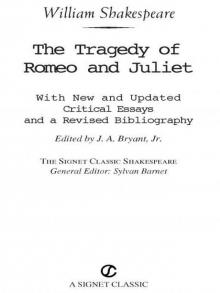 Romeo and Juliet
Romeo and Juliet As You Like It (Folger Shakespeare Library)
As You Like It (Folger Shakespeare Library)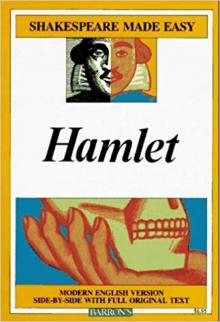 Hamlet
Hamlet Richard II (Folger Shakespeare Library)
Richard II (Folger Shakespeare Library)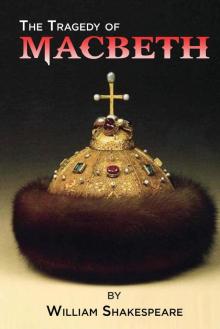 Macbeth
Macbeth Henry V
Henry V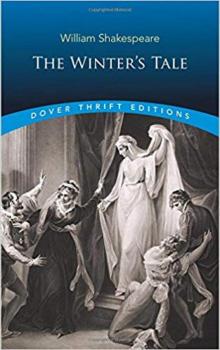 The Winter's Tale
The Winter's Tale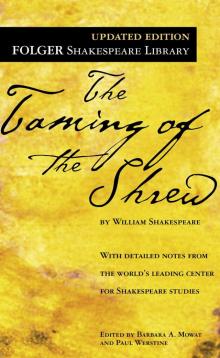 The Taming of the Shrew
The Taming of the Shrew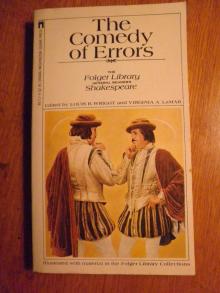 The Comedy of Errors
The Comedy of Errors King Lear (Folger Shakespeare Library)
King Lear (Folger Shakespeare Library)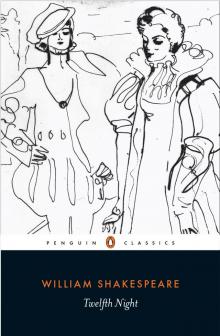 Twelfth Night
Twelfth Night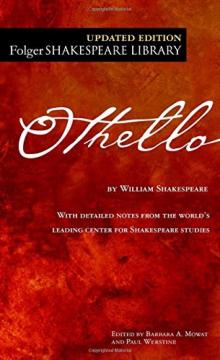 Othello
Othello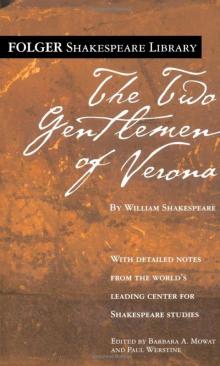 The Two Gentlemen of Verona
The Two Gentlemen of Verona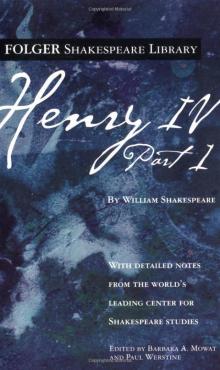 Henry IV, Part 1 (Folger Shakespeare Library)
Henry IV, Part 1 (Folger Shakespeare Library) King John/Henry VIII (Signet Classics)
King John/Henry VIII (Signet Classics)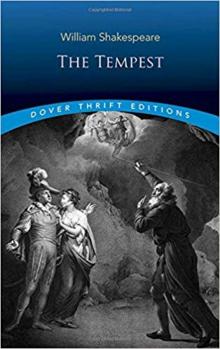 The Tempest
The Tempest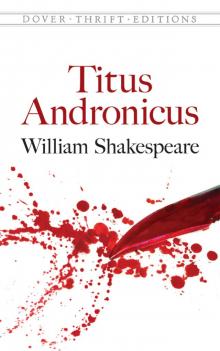 Titus Andronicus (Dover Publications)
Titus Andronicus (Dover Publications)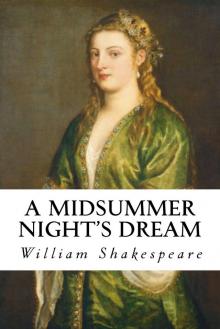 A Midsummer Night's Dream
A Midsummer Night's Dream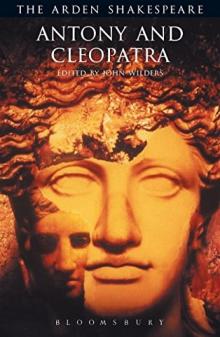 Antony and Cleopatra (Arden Shakespeare: Third Series)
Antony and Cleopatra (Arden Shakespeare: Third Series)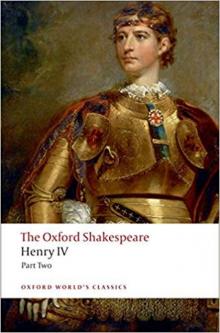 The Oxford Shakespeare: Henry IV, Part 2 (Oxford World's Classics)
The Oxford Shakespeare: Henry IV, Part 2 (Oxford World's Classics)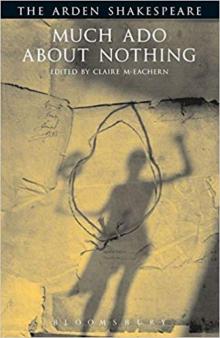 Much Ado About Nothing (Arden Shakespeare: Third Series)
Much Ado About Nothing (Arden Shakespeare: Third Series) All's Well That Ends Well
All's Well That Ends Well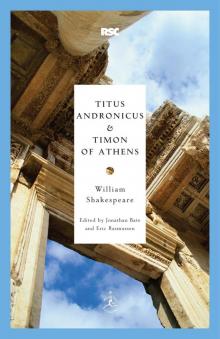 Titus Andronicus & Timon of Athens
Titus Andronicus & Timon of Athens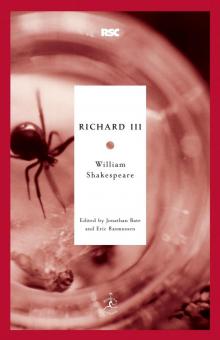 Richard III (Modern Library Classics)
Richard III (Modern Library Classics) Coriolanus
Coriolanus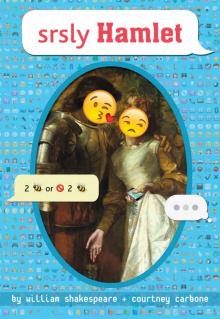 srsly Hamlet (OMG Shakespeare)
srsly Hamlet (OMG Shakespeare) The Merchant of Venice
The Merchant of Venice Richard III
Richard III Richard II
Richard II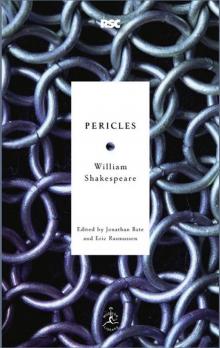 Pericles
Pericles As You Like It
As You Like It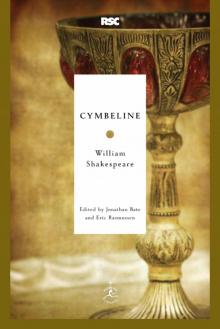 Cymbeline
Cymbeline Alls Wel that ends Well
Alls Wel that ends Well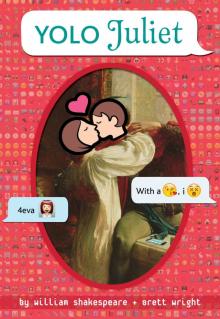 YOLO Juliet
YOLO Juliet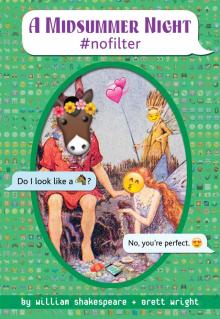 A Midsummer Night #nofilter
A Midsummer Night #nofilter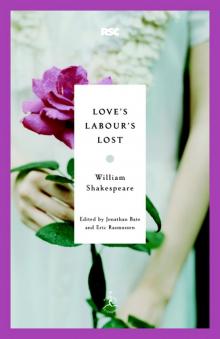 Love's Labour's Lost
Love's Labour's Lost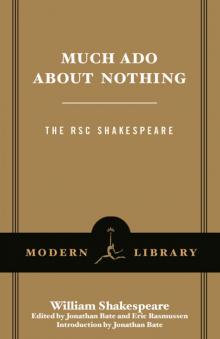 Much Ado About Nothing
Much Ado About Nothing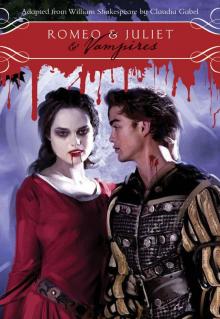 Romeo & Juliet & Vampires
Romeo & Juliet & Vampires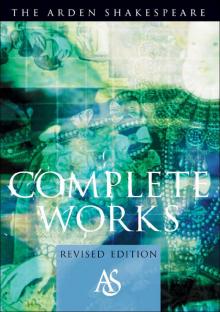 The Arden Shakespeare Complete Works
The Arden Shakespeare Complete Works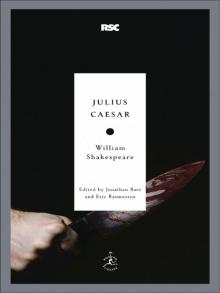 Julius Caesar
Julius Caesar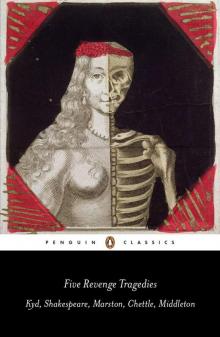 Five Revenge Tragedies: The Spanish Tragedy, Hamlet, Antonio's Revenge, The Tragedy of Hoffman, The Revenger's Tragedy (Penguin Classics)
Five Revenge Tragedies: The Spanish Tragedy, Hamlet, Antonio's Revenge, The Tragedy of Hoffman, The Revenger's Tragedy (Penguin Classics)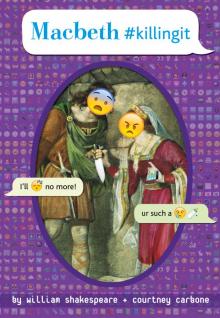 Macbeth #killingit
Macbeth #killingit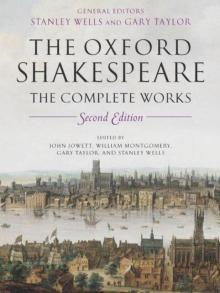 The Oxford Shakespeare: The Complete Works
The Oxford Shakespeare: The Complete Works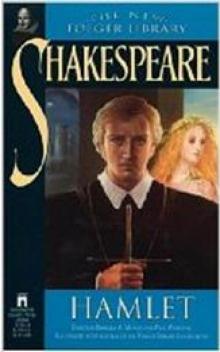 Hamlet, Prince of Denmark (Collins edition)
Hamlet, Prince of Denmark (Collins edition)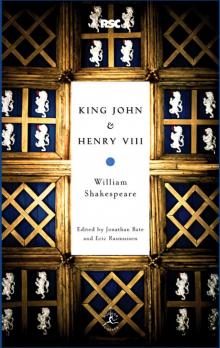 King John & Henry VIII
King John & Henry VIII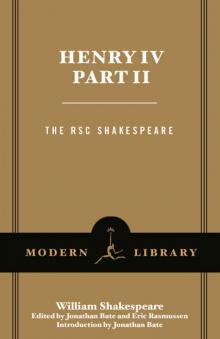 Henry IV, Part 2
Henry IV, Part 2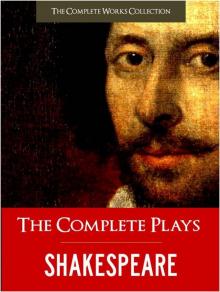 Complete Plays, The
Complete Plays, The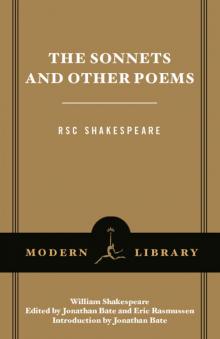 The Sonnets and Other Poems
The Sonnets and Other Poems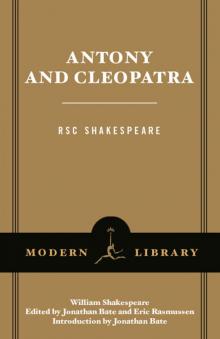 Antony and Cleopatra
Antony and Cleopatra Henry IV, Part 1
Henry IV, Part 1 Is This a Dagger Which I See Before Me?
Is This a Dagger Which I See Before Me? The Complete Works of William Shakespeare In Plain and Simple English (Translated)
The Complete Works of William Shakespeare In Plain and Simple English (Translated) The Sonnets
The Sonnets